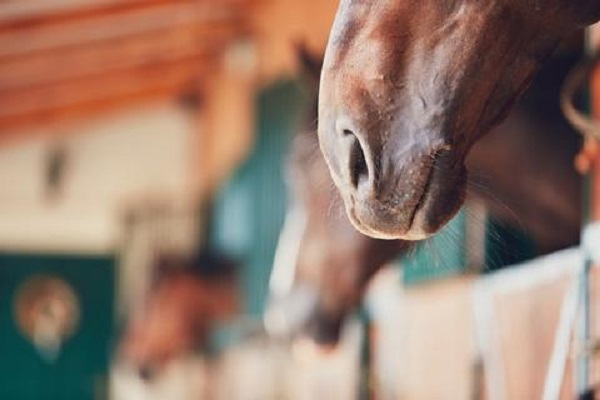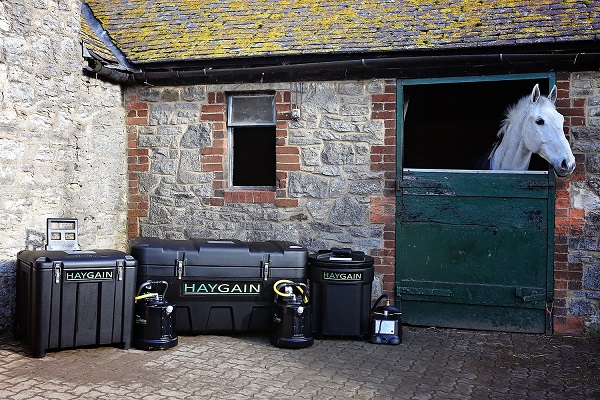Posted: 25th March 2019 | Back to news feed

Haygain welcomes Horse Health Week’s focus on infection risk and control and takes a look at respiratory disease in equines.
The annual Horse Health Week returns next week, running from the 25th to the 29th of March 2019, and this year the focus is on helping owners and yard managers understand the risk of infection and giving them practical advice on vaccination and biosecurity.
Horse Health Week is an initiative run by Keeping Britain’s Horses Healthy, and this year it comes soon after an equine influenza outbreak in the UK horseracing industry. This high-profile outbreak, and the news that 36% of owners choose not to vaccinate their equines, has led to calls for increased education around the risk of infection, how to spot the symptoms and the importance of vaccination. Innovative horse health company Haygain takes a look at some of the causes of respiratory disease in equines and how owners can identify it in their own horse and help support recovery while the horse is being treated.
After lameness, respiratory disease is the most common cause of a vet being called out to examine a horse, or for it to miss regular training and competing. In addition to this, multiple studies examining horses that outwardly appear perfectly healthy have highlighted the prevalence of respiratory disease in the domestic horse, making it a serious focus for horse owners.
There are four different categories of respiratory disease in equines:
- Respiratory disease caused by infection agents like bacteria and viruses – infectious diseases are particularly prevalent in foals and young horses while their immune system develops, and unvaccinated horses are naturally at greater risk;
- Respiratory disease caused by allergic reaction to something the horse has inhaled, such as pollen or mould;
- Respiratory disease caused by irritants that have been inhaled, for example dust or ammonia;
- Respiratory dysfunction caused by a range of factors such as upper airway obstruction, lung bleeding or a reaction to medication.
How to identify respiratory disease in horses
Naturally the first step to take if someone suspects their horse is suffering from a respiratory disorder is to contact your vet, but what are the signs to look out for in the first instance?
A cough is a key indicator that a horse is suffering from respiratory disease - indeed if a horse is coughing then there is an 84% chance that it has a respiratory tract infection or one of the other types of respiratory disease listed above. It was once assumed that a few coughs during warm up and cool down is fine, but with greater focus and research on respiratory system of the horse, we now know that no healthy horse should cough.
Other external signs of respiratory disease include nasal discharge, increased respiratory rates both at rest and during exercise, poor athletic performance, abnormal breathing during exercise, slow recovery from exertion, an elevated temperature or blood in the nostrils after exercise. A vet may use an endoscope to examine the upper and lower respiratory tract and take bloods to confirm diagnosis.

Treating respiratory disease in horses
Once respiratory disease has been identified, there are a range of options open to vets to treat the horse. These may include prescribing antibiotics for a bacterial infection, bronchodilators to open up the airways, anti-inflammatories to reduce inflammation in the airways and, in some cases, high dose antioxidant supplements to reduce the symptoms.
Bronchodilators and anti-inflammatories can both be delivered by inhalation using a nebuliser such as the robust and silent Flexineb System from Haygain.
There are actions that horse owners can take to support the horse’s respiratory health during recovery from respiratory disease, such as carefully managing the environment that the horse is in. Haygain’s Comfortstall flooring system uses a combination of a soft foam underlayer and a sealed rubber membrane to ensure no urine soaks underneath the matting, meaning there won’t be any build-up of urea to inflame the airways. The flooring system also means that owners can use 75% less bedding, lowering the amount of dust present in the stable environment. Haygain’s best-selling hay steamers can reduce the incidence of respiratory inflammation in equines by 65% , killing bacteria, mould and fungal spores in forage, as well as removing the vast majority of respirable dust.

Explore the full Haygain product range and read more about the research supporting the benefits of Haygain products here
The Equestrian Index newsfeed is compiled from articles submitted by advertising members and expresses the opinions of those members. Watsons Directories Ltd shall not be held liable for any inaccuracies or mis-statements therein.
